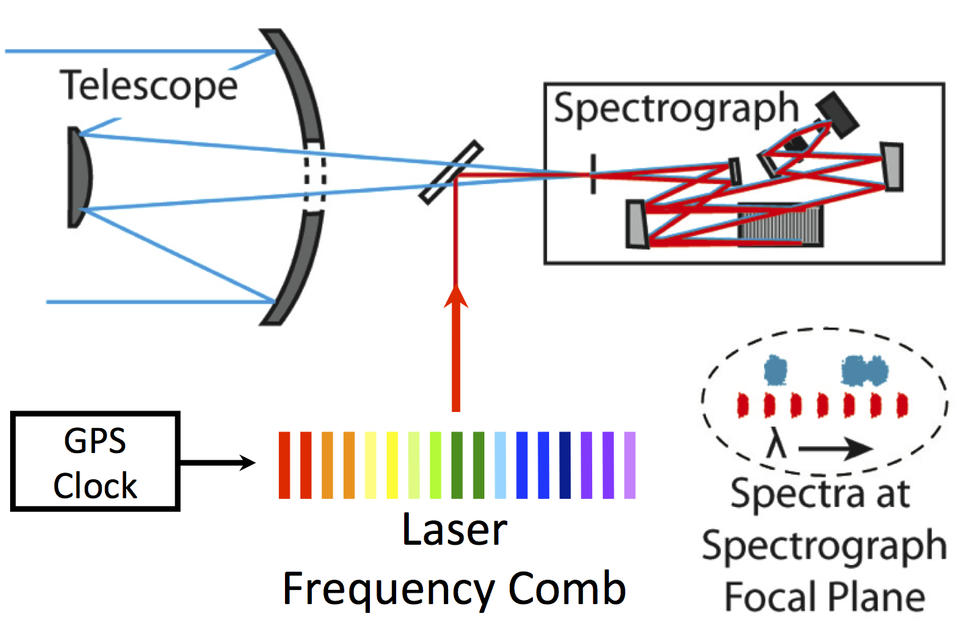Summary
We have constructed portable frequency combs that have provided in situ calibration of astronomical spectrographs, to aid in the search for exo-planets.
Description

A powerful technique for finding exo-planets is based on measuring the tiny Doppler shifts in the light from a star that is induced by the presence of orbiting planets. While many exo-planets have been discovered using this Doppler radial velocity (RV) technique, it remains a significant technical challenge to reduce systematic uncertainties to the point of detecting an Earth-analog planet. Towards this goal, it is now recognized that laser frequency combs (sometimes called "astrocombs" for this application) offer new opportunities for the highest precision astronomical spectroscopy measurements (e.g. 1 cm/s RV, 3×10−11 fractionally, or ~6 kHz at 1550 nm) by providing a broad bandwidth, precisely tunable calibration spectrum that has an absolute accuracy traceable to the SI second. The uniformly spaced, bright, and narrow features of the comb spectrum are ideal for wavelength calibrations, while the absolute traceability of the comb enables comparison of observations made on timescales from days to years and even from different observatories.

Apply for an NRC postdoc in optical atomic clock or fs-laser frequency comb research. Application deadlines are February 1 and August 1 annually (but inquire well in advance).
Summer Undergraduate Research Fellowship (SURF)
Summer program at NIST-Boulder for undergraduates in science, engineering, and mathematics. The application deadline is February 15 annually.
Postdoctoral, Visiting Scientist, and Graduate Positions
Our Group has periodic openings for Postdoctoral Fellows, Visiting Scientists, and Graduate Students. Please contact us for more information.

